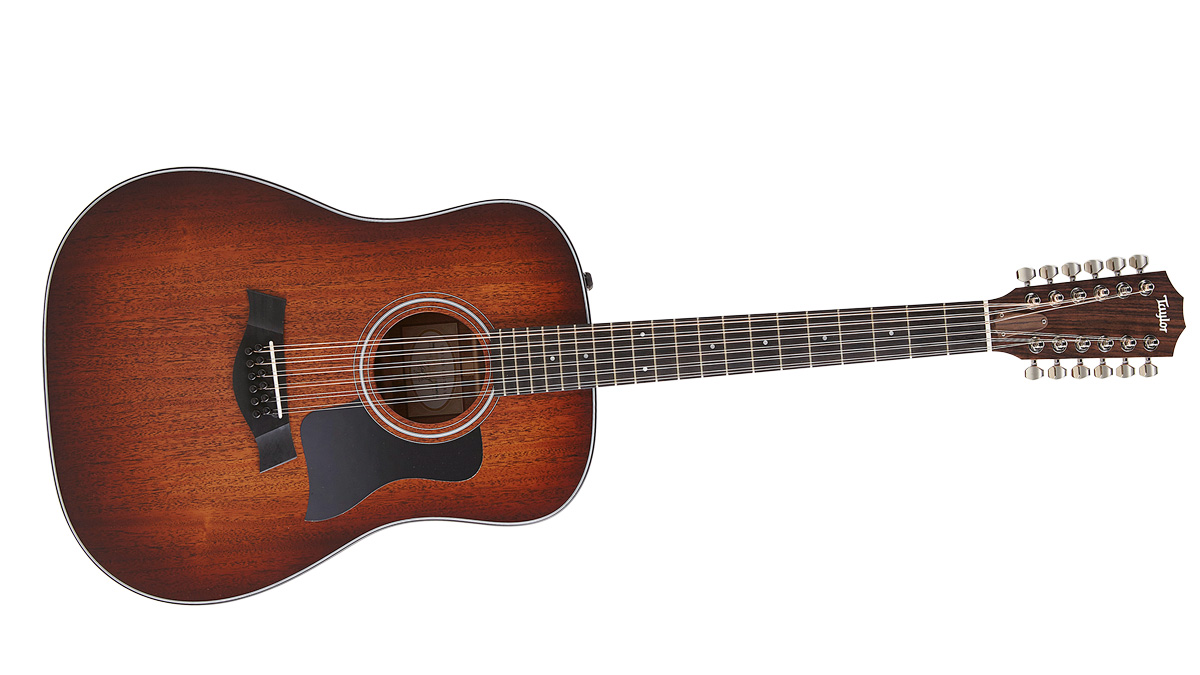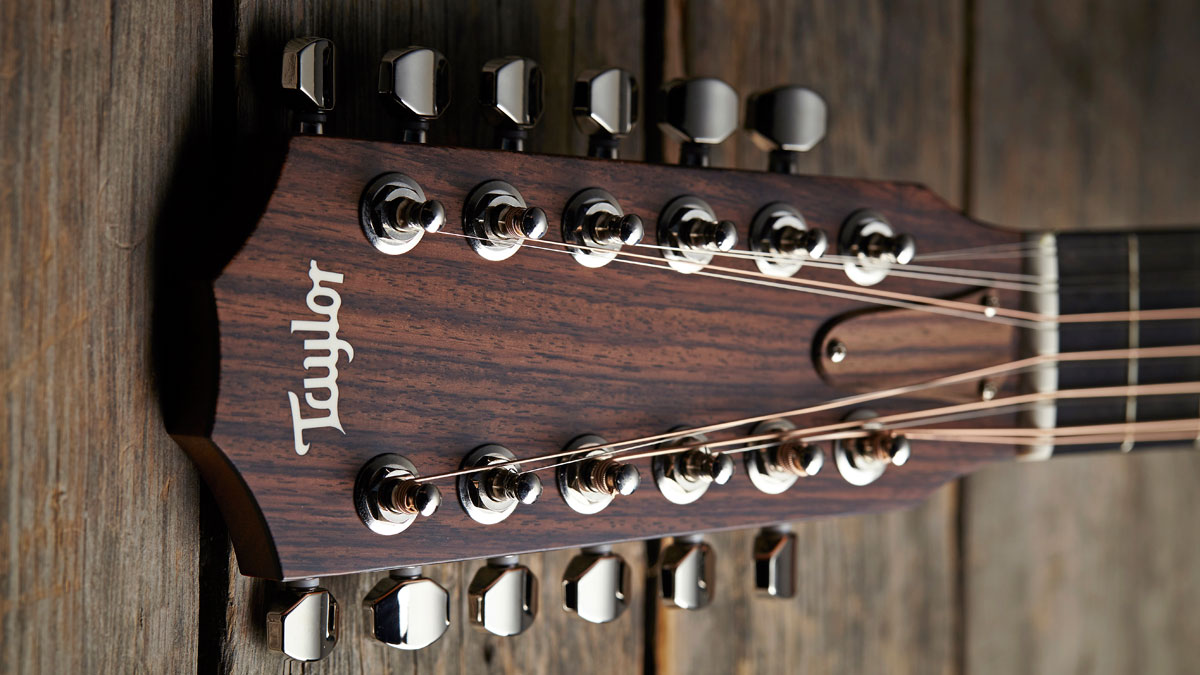MusicRadar Verdict
This 12-string is bags of fun, too, meaning that these limited-run guitars from Taylor's 300 Series should certainly be explored.
Pros
- +
Good price point for a quality 12-string, distinctive good looks and a full range of useable sounds.
Cons
- -
Perhaps a bit lacking in bass response, could do with a little more oomph – though treble sparkles.
MusicRadar's got your back

Taylor 360E 12-string

Taylor 360E 12-string
This new special edition is plucked from Taylor's 300 Series, and shares plenty in common with stablemate the baritone 326E.
This 12-string guitar is standard tuned and, as is common among all 12s, renowned for shimmering highs and full-bodied lows.
When it comes to 12-string guitars, of course, both hands and ears are in far more familiar territory and so approaching the Taylor 360e was arguably a little more straightforward than its low-frequency sibling. As stated above, the actual building materials in use on both these models are very similar - although we suspect that the bracing under the soundboards might bea completely different story. So the 360e has the same mahogany top with sapele back and sides, mahogany neck and ebony fingerboard as before.
The body shape is dreadnought, which represents a slight change of tack for Taylor as most of its 12-string range opts for the Grand Symphony body style, and this is because it's thought that the slight increase in fullness will add somewhat to the bass response. Indeed, the story behind the tonewoods in use here is that the mahogany/sapele combo will produce a drier, more woody midrange, while retaining the shimmering high end characteristic of 12-string guitars.
"Some 12-strings have a bass on them that seems to burst out of the soundhole, but on the Taylor, it's altogether more subtle and nuanced."
Casting an eye over the guitar in general, workmanship is top class, as you would expect from one of the world's foremost manufacturers and the finish is very easy on the eye, too. The 47.6mm expertly cut nut means that the six pairs of strings aren't too crowded on the fretboard, allowing the fingers a good amount of room to manoeuvre - a common complaint regarding 12s is that the fingers of the left hand can become easily confused because of the density of strings, particularly for chordal accompaniment down near the headstock. Happily, that's not the case here.
Sounds
To begin with, it has to be said that many 12-strings that have come under scrutiny within these pages suffer from a marked resistance to any attempt at fingerstyle playing. So, in many ways, this can be seen as the acid test for a 12: can you fingerpick or not? The 360e takes this completely in its stride - both straight fingerstyle and hybrid pick-and-fingers are relatively easy, with none of that unnecessary inaccurate faffing about that you sometimes encounter.
As for sounds, the 360e has a slightly darker timbre than you would perhaps find on a spruce-topped 12; the mahogany acting like a tone control with some of the high treble rolled off. As for the robustness of the bass, we couldn't detect much of an increase here. Some 12-strings have a bass on them that seems to burst out of the soundhole, but on the Taylor, it's altogether more subtle and nuanced. There's a store of power there, for sure, but it seems to be more evenly distributed across the range.
Want all the hottest music and gear news, reviews, deals, features and more, direct to your inbox? Sign up here.